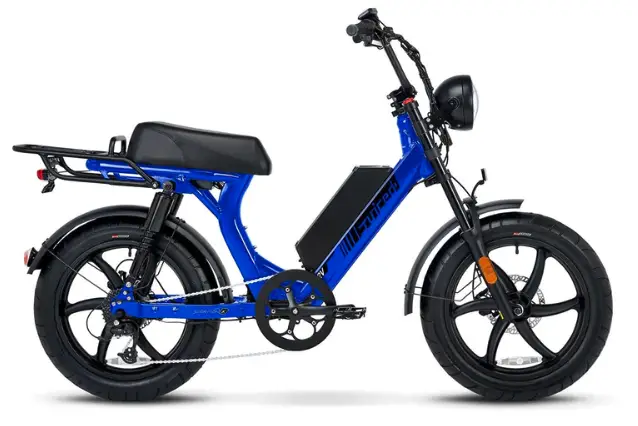Are you looking for a moped or an electric bike but aren’t sure where to start? With so many possibilities, it’s critical to take the time to choose which bike is the best fit for you. So what are the key differences between the two?
The main differences between an e-bike and a moped are their power sources, speeds, regulation, prices, and portability. An electric bike runs on battery power, typically falls under the rules for bicycles, as opposed to motor vehicles, and is slower than a moped.
This post will help you learn what you need to know about electric bicycles and mopeds to help you decide what is best for you.
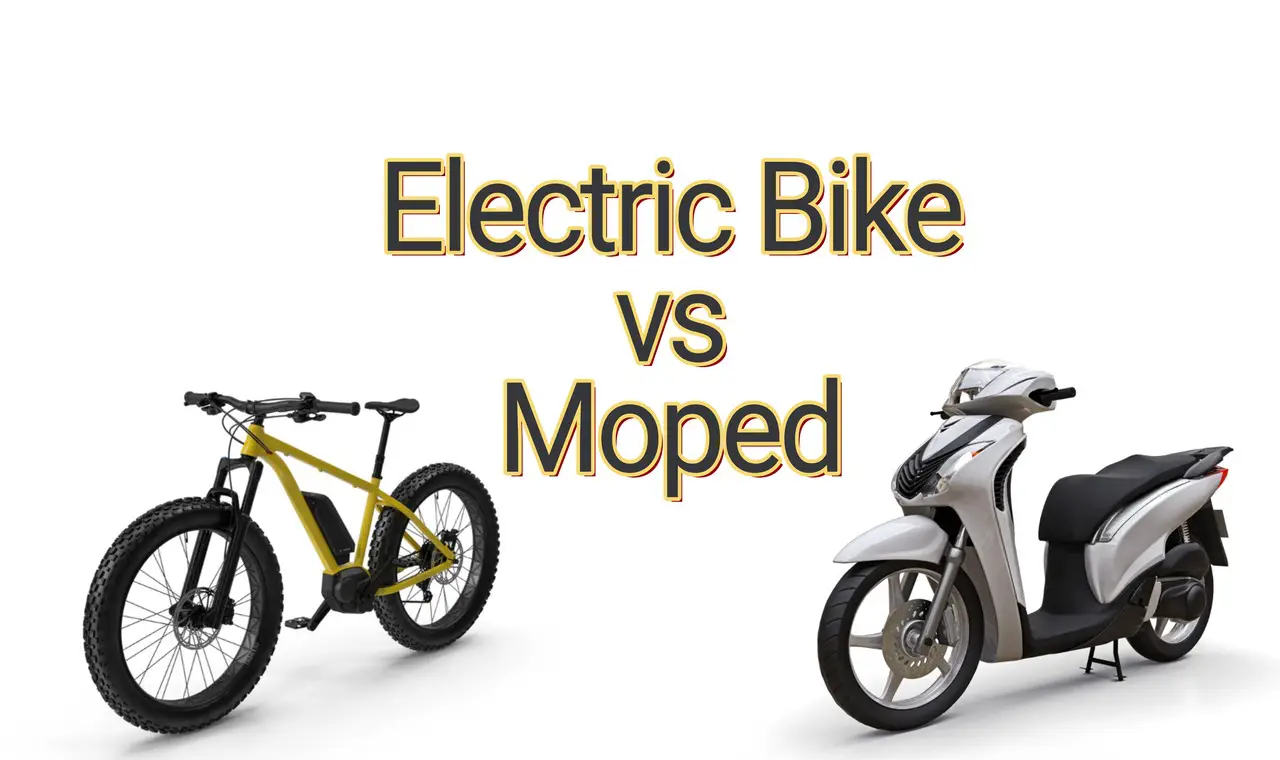
The Differences Between E-Bikes and Mopeds
Mopeds are typically gas-powered vehicles with engine sizes of 50cc or lower and capable of attaining 30 miles per hour (48.3 km/h). However electric mopeds are also on the market.
On the other hand, an electric bike is like a traditional bicycle outfitted with a battery-powered motor.
Whether it’s a gas or electric moped that has pedals or not isn’t essential to our comparison. Rather, how we distinguish a moped from an electric bike is how fast it can go, the size of its engine, the laws regulating it, and its flexibility.
Different Power Sources
The most significant difference between an e-bike and a moped is the power source. An e-bike runs on a battery-powered engine and the pedaling of a rider.
On the other hand, a moped gets its speed from a gas-powered engine.
How a Moped Works
A moped typically runs on a small gas-powered, two- or four-stroke engine. A moped’s engine is smaller than those in larger vehicles. Although a four-stroke engine is more powerful, they are most commonly used on larger mopeds (often called scooters).
A 4-stroke engine uses fuel more efficiently, but that efficiency comes at a cost – weight. A 4-stroke engine can weigh up to half more than a smaller engine. In addition, a 2-stroke engine produces more power than a 4-stroke engine of a similar size.
Since moped engine size is limited to 50cc, the additional power of the smaller engine and the heavier weight makes a 2-stroke engine a reasonable option. In addition, a two-stroke engine is easier to work on, has fewer parts, and is cheaper to manufacture.
Electric mopeds need to be charged just like electric bikes.
In most cases, a moped will have a 2-stroke engine, while the faster scooter will run on a 4-cycle.
How an E-Bike Works
The power in electric bikes comes from two sources—you and/or the battery and motor. You can decide how much speed you want to use through pedal assist and throttle, or manual pedaling power.
A full-powered e-bike with a throttle allows its engine to do most of the work (if you don’t want to pedal). Full-powered bikes tend to be the heaviest because of their large batteries and sturdier hubs. You have an option not to pedal, but then you’ll have a limited 10 to 20-mile (16 to 32.2 km) range (since you’re only using electric power).
A pedal assist only electric bike requires you to pedal to move forward, but you will have a broader average range of 30 to 90 miles (48.3 to 144.8 km).
If you just want a little help going up a hill or when your legs are tired, then a pedal assist e-bike is for you. You can still get plenty of exercise as well. The full-powered bike can work more like a moped, if you choose not to pedal, except you have a more limited range.
The batteries are the most critical parts of the e-bike because they power the engine that helps you move forward. Lithium-ion batteries (like those used in laptops and cell phones but much bigger) are the most common option.
They are more expensive than previous rechargeable battery technologies, but they provide more power than heavier, less-expensive batteries. The average e-bike battery will provide you with a range of 15–50 miles and a top speed of 20 – 28 miles per hour.
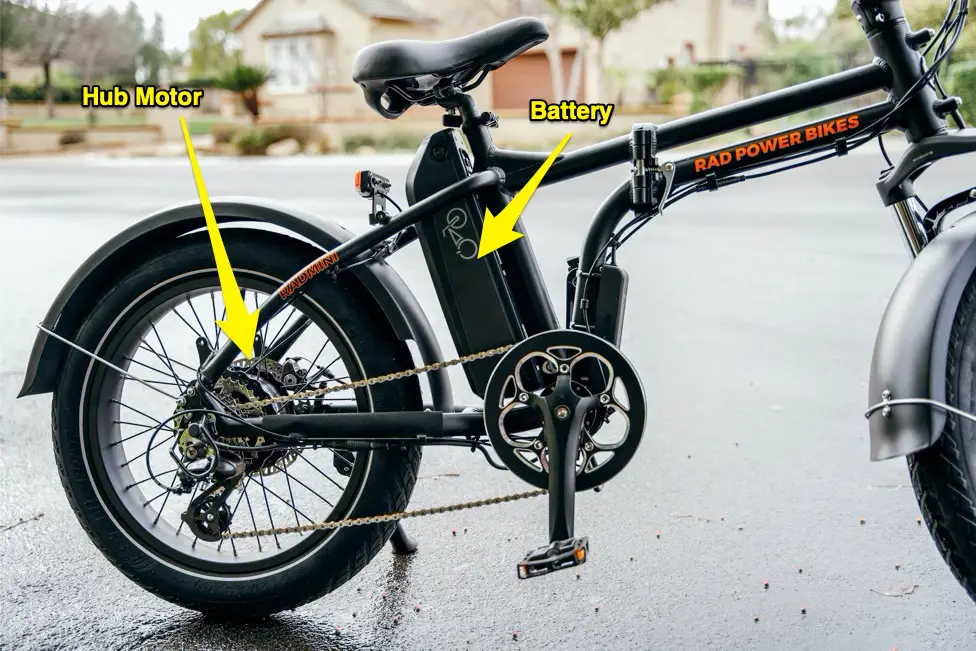
Learn more about how an electric bike works in this article!
Bottom Line on Power
When it comes to power, there is no clear winner. Do you want a dependable way to zip around town that requires little work (besides an occasional trip to the gas station)? If so, then a moped is for you.
If you don’t mind getting a little exercise, an electric bike is the way to go. Electric batteries have a shorter range between charges, but you can always pedal your way to your destination if the battery runs out of juice.
Moped Speed vs Electric Bike Speed
Speed is another difference between the two, but it is not as much of a difference as it might seem at first glance. State laws regulate the maximum speed, and e-bikes or mopeds that can go faster will be classified differently.
Typically, mopeds can go faster than electric bikes. A moped’s engine is usually limited to 30 mph (48.3 km/h) on flat ground in most states. Larger 125cc Scooters can reach highway speeds, but most states license them as motorcycles.
The electric motors on Class 1 and Class 2 e-bikes have a max speed of 20 mph (32.2 km/h). Since most states classify these e-bikes as bicycles, very few regulations are associated with them. Many states place none of the licensing, registration, or insurance regulations that apply to cars and motorcycles on e-bikes.
The 20-mph maximum is without human assistance. Add your pedal power, and you can reach fast speeds on your e-bike equal to a moped.
However, those higher speeds are difficult to sustain, especially over hills and longer distances.
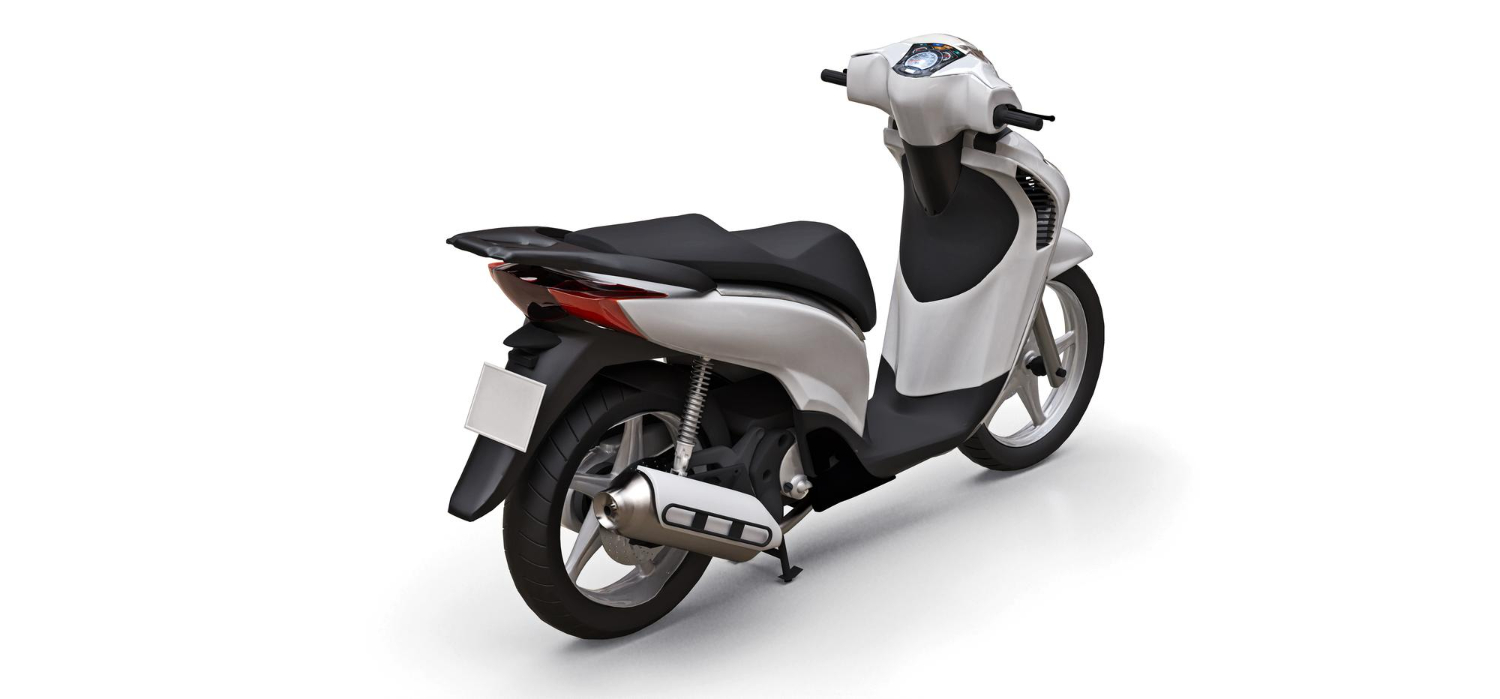
Bottom Line on Speed
Mopeds come out ahead in this category. They are allowed to go faster and can do so for longer. A moped with a full gas tank can travel at maximum speed for 50 plus miles (80.5 km). Few bike riders can match that.
Regulations and Laws
Although both e-bikes and mopeds are good options for personal transportation, regulations vary between states. In general, moped regulations are more stringent. Many states regulate an electric bike as they would a normal bicycle and follow a three-tier classification system, but moped regulations are complicated and confusing.
The rules for riding a moped differ from state to state. In general, they are based on the size of your moped’s engine. If it’s 50cc or less, you may only need a regular learner’s permit or driver’s license.
If the gas engine capacity exceeds 50cc, you must get a motorcycle endorsement on your driver’s license in most states. You must also obtain a motorcycle permit and pass a road skills exam. If you pass the test, you will be able to ride a scooter, motorcycle, or moped legally.
The following table is an example of the differences in e-bike and moped regulations based on California’s Laws.
| California’s Electric Bike Laws | California’s Moped Laws |
| Electric bicycles are regulated in the same way regular bikes are. Both electric and human-powered bicycles are subject to the same traffic laws. | A driver needs an M2 or M1 driver’s license, and the user must register the moped and be at least 16. In addition, you may need liability insurance that includes bodily injury and property damage coverage. |
| California uses a 3-class system that many states have adopted: Class 1: A bicycle equipped with a motor that assists the rider power only when the rider pedals. The engine stops helping the rider when the electric bike reaches 20 mph. Class 2: Bicycle with a throttle-activated engine that stops when the e-bike reaches 20 mph. Class 3: An electric bike with a motor that only helps a rider when pedaling and stops when the e-bike reaches 28 mph. | California has the following definition for a moped: Two or three-wheel mopeds have an electric or gas motor and automatic transmission. A moped may also have pedals. The maximum speed is less than 30 miles per hour on level ground. |
| Only Class 3 riders & children are required to wear helmets, and cities can add restrictions on e-bikes’ use of local bicycle paths. | All moped drivers and passengers must wear a helmet. |
California only regulates speed, not engine size. Motorcycles, by definition, have engines of 150 cc or greater. Therefore, motor scooters that go faster than 30 mph are in a gray area between electric bikes and motorcycles. Just note that you’ll find motor restricted areas in all states and countries.
You can find more information regarding your state’s requirements at the Electric Bike Laws site.
Bottom Line on Regulations
Without a doubt, mopeds are regulated more thoroughly than e-bikes. More likely than not, you will need a driver’s license of some sort and license tags for a moped. Only a handful of states (who categorize e-bikes as motor vehicles) require e-bike riders to have either.
The Moped Army has a Wiki that lists Moped Laws by state.
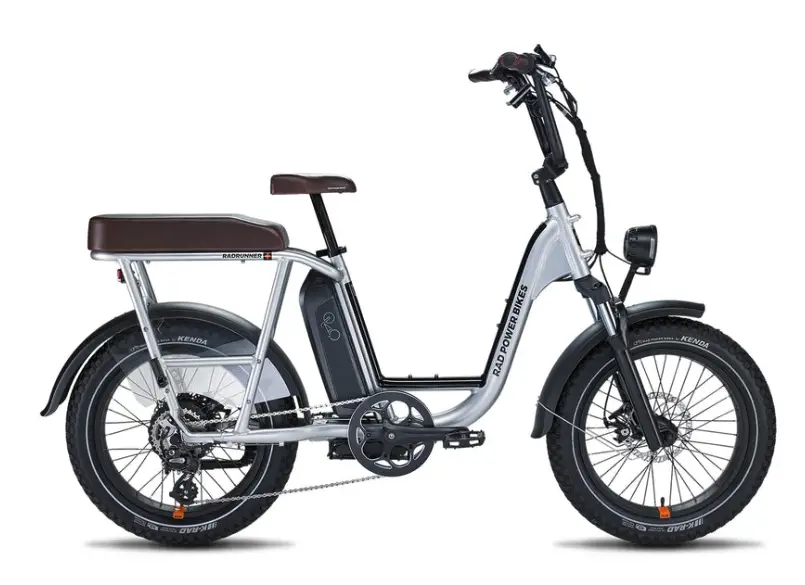
Price Differences
Surprisingly, the difference between e-bike and moped prices is not as significant as one might think. Electric bikes are more expensive than you might expect because of the electric motor and battery prices.
Although you can find a few e-bikes for under $1,000, you get what you pay for. Over half of e-bikes cost in the $1,000 to $3,000 range. Specialized electric bikes can cost upwards of $10,000.
The cost of an electric bike, like that of a standard bike, differs depending on the components’ quality. Adding a battery, controller, and electric motor increases the cost of an electric bike.
A new moped can cost as little as $1,000 for a low-quality model and as much as $11,000. As with electric bikes, the price varies with the vehicle’s size, engine, features, and, of course, build quality.
The 50cc mopeds are at the lower end of that range of those prices. Once engine size increases to scooters, costs rise dramatically. Expect to pay $1,000 to $2,000 for a decent moped.
Bottom Line on Cost
The bottom line on cost is that you can get either vehicle for under $1,000 but should expect to pay more to get a high-quality gas vehicle such as a gas-powered moped, but electric bikes tend to need more maintenance.
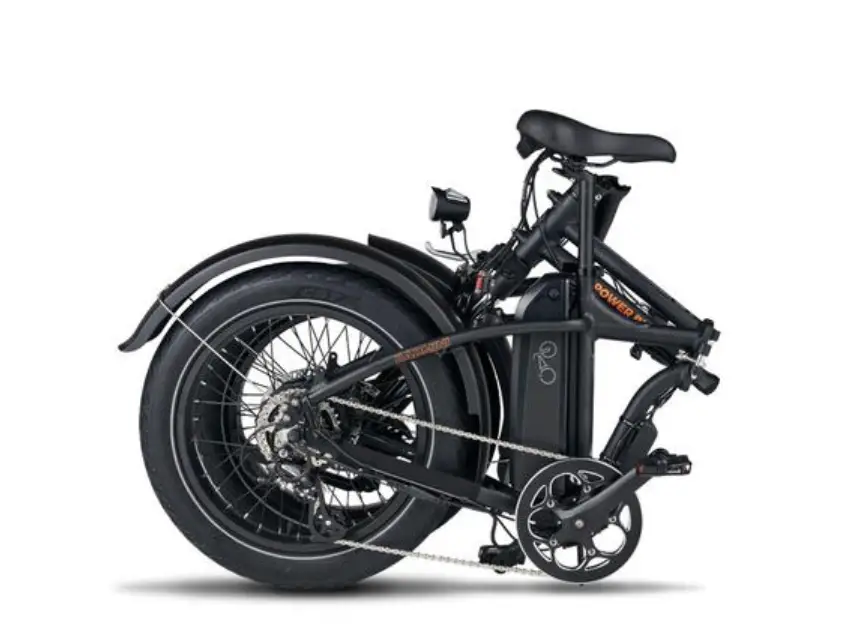
Portability
An e-bike is far more portable than a moped because of the significant weight difference and where the two are allowed and can travel.
An e-bike weighs more than a normal bicycle of a similar size. Their typical weight ranges between 32-70 pounds (15-32 kg) because of the added weight of the electric motor and battery, with most e-bikes’ weighing well over 50 pounds (23 kg). However, they’re still far lighter than mopeds.
Although you can find lighter models, a moped’s average weight is 180 pounds (80 kg). Putting electric bikes on a car rack is manageable, but try doing that with a moped? You will need to buy a specialized bike rack and have a car that can handle the additional weight.
Also, a moped can’t travel everywhere an electric bike can (or park in bicycle parking spaces). Although neither can go on a highway, mopeds cannot ride on sidewalks. Some states allow you to ride a moped in bike lanes, but many states classify it as a motorized vehicle and don’t allow it in bike lanes.
Mopeds are also not allowed on bike trails, and for trail riding, you would want to use a dirt bike as mopeds can’t handle rough terrain.
One last note: You can buy electric bikes that fold, making them easy to take along with you on a bus or train, or in the back of your car.
Bottom Line on Portability
An e-bike is more portable, and because you can ride one in bike lanes, sidewalks, or road shoulders, you can circumnavigate busy streets. On the other hand, the rules that apply to a motorcycle generally apply to a moped.
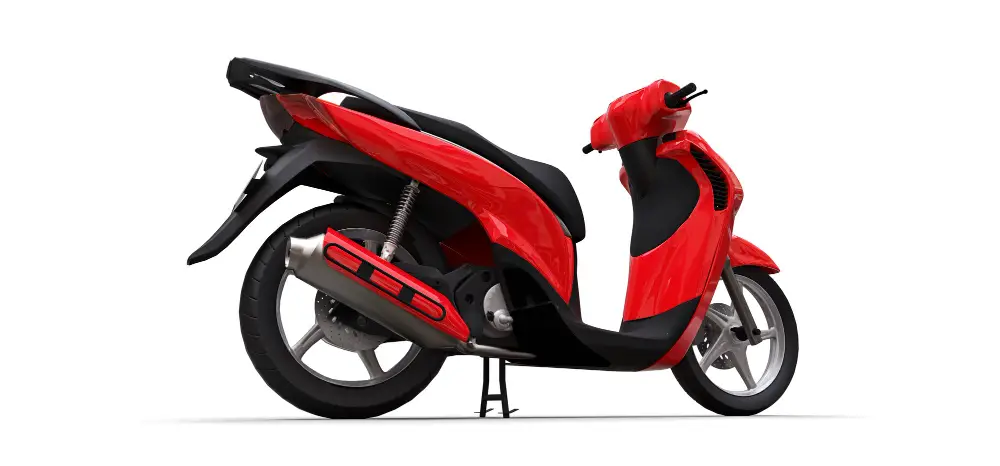
Do Mopeds Still Have Pedals?
Some mopeds, even the newer electric mopeds, have pedals, although riders rarely use them to get where they’re going. Often the pedals are a mechanical starting mechanism or a resting place for a driver’s feet.
A pedal moped is a two-wheeled moped with pedals. A rider can use the pedals to make the moped go faster, but the moped’s weight restricts how much additional speed the rider can muster.
The pedals on these mopeds might be connected to the engine or be separate. Mopeds with pedals not connected to the engine are often classified as bicycles if the moped’s maximum speed meets the definitions in your state.
One last class to keep in mind is a motorized bike. These bicycles are like electric bikes, except they have a gas-powered motor. However, they are neither mopeds nor scooters—they are bikes with a motor attached.
What Is the Difference Between an E-Bike, Moped, and Scooter?
Many people use the terms e-bike, moped, and scooter interchangeably, so how are they different? Knowing this is helpful so that you understand any comparisons between them.
The name “moped” comes from the two words “motor” and “pedal.” Gas mopeds were once bikes powered by a motor and pedaled by a human in the past. However, nowadays, mopeds with pedals are less common.
The difference between mopeds, scooters, and e-bikes is that mopeds and scooters are typically gas-powered, while electric bikes primarily use rechargeable batteries. In addition, mopeds have smaller motors than scooters.
Some people stick to the older definition of moped. Anything that doesn’t have pedals is a scooter. According to these purists, it is not a moped if it doesn’t have pedals.
Of course, there are also electric scooters these days that are stood on and move purely by an electric motor. These types of electric scooters are typically foldable and don’t have a seat..
The purists will often refer to their “scooter” as a Vespa since everyone knows what that means. However, the key differences are engine size and max speed from a legal perspective. Mopeds are typically distinguished by the size of their motor and their top speed.
Thus, a “scooter” without pedal power is legally defined as a “moped” if its motor is small or slow enough to qualify as one. In many states, if the scooter’s engine is more powerful than 50cc, it is classified as a motorcycle, even if it is a step-through, instead of a step-over vehicle.
And, clearly, an electric bike doesn’t have a gas engine.
Which Is Better: E-Bike or Moped?
Mopeds and electric bikes are both excellent choices for personal transportation, and which one you choose depends on your lifestyle.
For example, if you value the riding experience, flexibility and want some exercise from your power assisted vehicle, an electric bicycle might be a better choice. It’s also a greener alternative since it doesn’t release toxins into the air.
However, if you want a high-performance riding experience, a fast commuter vehicle, and don’t mind busy streets or fuel cost, the best decision might be a gas-powered moped.

